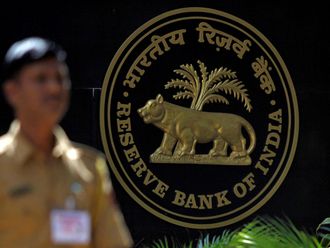New York (Reuters) Safe-haven US Treasuries rose last week, sending benchmark yields toward one-year lows as evidence mounted that the short and lacklustre economic recovery was at risk of fizzling out altogether.
US economic growth was slower than previously reported in the first quarter and a closely-watched private report by the Econ-omic Cycle Research Institute suggested it is about to slow further.
This contributed to a supportive environment for Treasuries to explore the higher price range they have carved out in recent weeks as economic data took a weaker turn, enhancing the safe-haven allure of government bonds.
The immediate question for Treasuries is whether buyers have the gusto to push benchmark yields below 3.06 per cent, which would be the lowest since level since the end of April 2009, without a pullback or period of consolidation.
"It feels like the rally is taking a pause, but it's done nothing wrong at this point," said Rick Klingman, managing director of Treasury trading at BNP Paribas in New York.
"The range for right now is 3.18 per cent to 3.06 per cent," he added.
The benchmark 10-year Treasury note was last up 9/32 in price, yielding 3.11 per cent compared with Thursday's close of 3.14 per cent. The 30-year long bond rose a point in price before backing off its sharpest gains. It was last up 28/32, yielding 4.06 per cent, down from Thursday's close of 4.11 per cent.
Even if bonds descend from their current lofty levels, it probably will not signal fundamental change for a market that has been bolstered by a raft of weak economic data going back to the discouraging May jobs report at the start of the month.
It is more likely that some traders will take profits amid doubts that Treasuries can mount a sustainable rally from these levels without a new catalyst.
Reason for buying
For now, analysts say reasons for buying increased this week when the Federal Reserve released its latest policy statement.
Though largely reflective of the downturn in growth indicators and inflation in recent economic figures, some say the increasingly dovish tone in its commentary raises the chances it may once again consider new efforts to stimulate the economy.
The Fed's last big effort was its quantitative easing programme of asset purchases, which focused mainly on mortgage assets but also included Treasuries.
If there is another round of quantitative easing, some analysts say it may focus on government bonds, though it is still not clear that it will take place.
Speculation on quantitative easing, however, would support continued flattening of the yield curve, and also comes as some doubt whether deficit-worried lawmakers are willing to approve more spending measures to support the economy.
"To the extent that some support is needed it's going to come back to the Fed rather than the Congress and the play book says they're going to have to further increase the Fed's balance sheet, and buying assets," said William O'Donnell, head of US Treasury Strategy at RBS Securities in Stamford, Connecticut.












